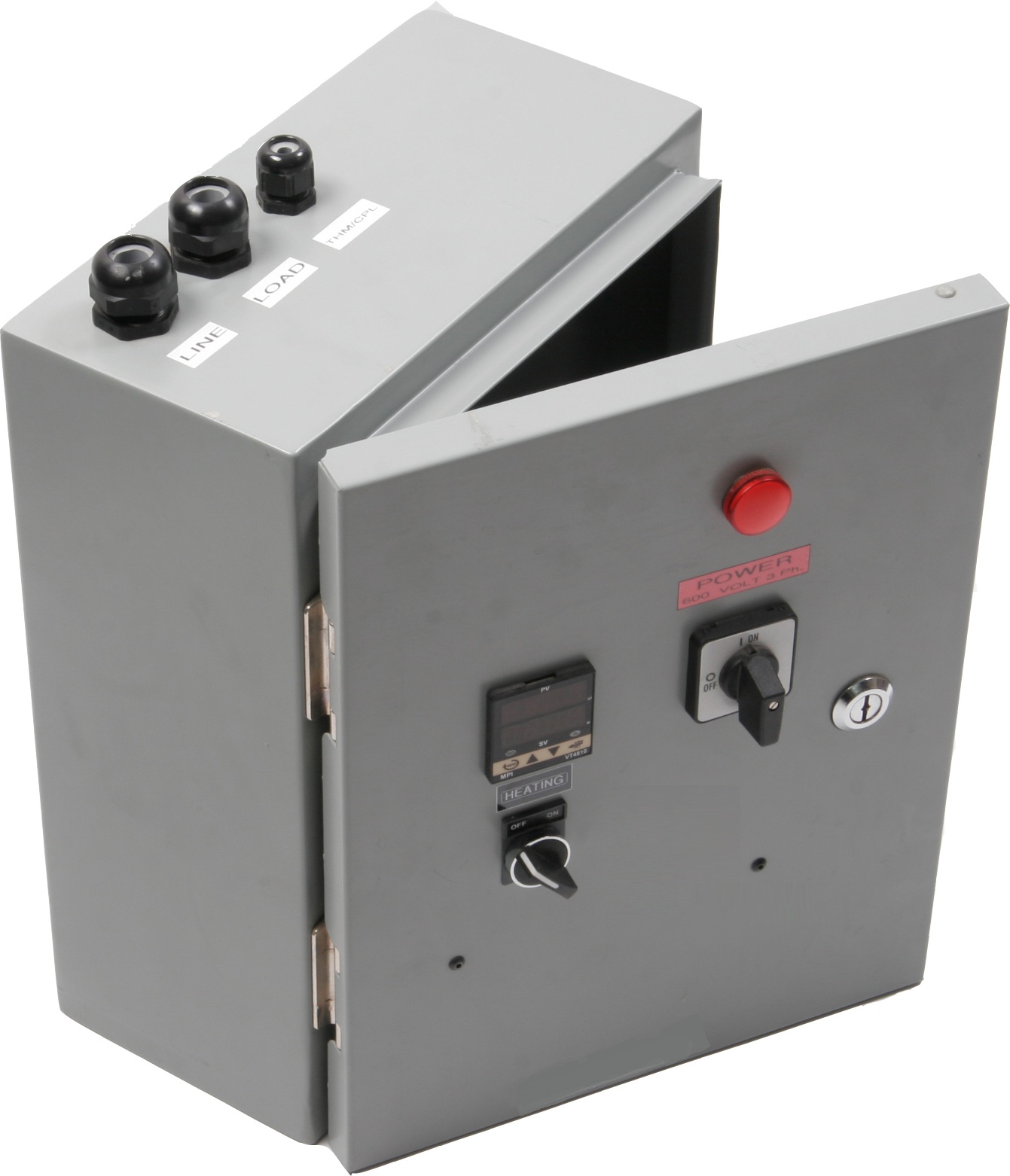What is a Digital Controller?
Control panels are essential elements of any electrical device. Control panels are especially important on HVAC devices and heater elements. They enable you to control the temperature, voltage, and pressure more easily for a smoother operation of the device. Whether you need to maintain the stability of a heater, prevent overheating of the device, or avoid chemical disintegration of a fluid, control panels give you the ability to do so. Digital controllers provide a convenient way to operate your heaters.

What is a Digital Controller?
A digital controller is a small digital unit that acts as a system controller. Depending on the controlling requirement, a digital controller can take the form of a desktop computer or it can be as small as a micro controller. The Laplace transform is replaced by Z-transform in the digital controller wherein a discrete time signal in the form of a sequence of complex or real numbers is converted into a complex frequency domain representation.
Digital controllers are mostly used as a feedback system. A typical digital controller has the following components:
· A/D Conversion – Analog inputs are converted into a digital format.
· D/A Conversion – Digital outputs are converted into analog inputs for the device.
· A program relating the outputs and inputs.
Digital controllers have become popular in recent times as they are inexpensive. A small micro controller can be purchased for only $5. Digital controllers offer the flexibility to configure them easily using software. You can change the parameters and scale the performance of the device. In addition, digital controllers are less susceptible to environmental impact when compared with analog controllers.
Digital Controllers in Heaters
Digital controllers in an industrial heating solution enable you to control the heat and temperature of the device conveniently. Heat transfer is efficiently and stably maintained so that overheating issues can be prevented. Not only do digital controllers regulate heat, they put safety mechanisms in place. A sensor device is installed in the process heater. It measures the actual state of the device and compares it with the target state. The control system, then, takes the appropriate action to stop or allow the heating process. When the temperature gets lower than the specified value, the digital controller activates the heating system. When the temperature reaches the threshold level, the heating process is automatically stopped. The controller has a digital display which provides a clear view of the state of the device. The sensor, installed inside the heater, monitors the temperature of the device while the digital display shows the information in Celsius or Fahrenheit values.
Control panels come in different types of boxes including: dust-proof boxes, water-proof boxes, explosion-proof boxes and standard NEMA 1 terminal boxes. Control panel boxes can be chosen according to the humidity, moisture, or explosion levels in an area. A standard NEMA 1 terminal box is suitable for indoor areas where moisture, humidity, and explosion are not a concern. In outdoor areas, a NEMA 4 terminal box that comes with a weather-resistant enclosure would be a good option. A digital controller is not only beneficial to an industrial heater. It is an essential component in a ventilation unit, air condition unit, or a refrigerator.

What is a Digital Controller?
A digital controller is a small digital unit that acts as a system controller. Depending on the controlling requirement, a digital controller can take the form of a desktop computer or it can be as small as a micro controller. The Laplace transform is replaced by Z-transform in the digital controller wherein a discrete time signal in the form of a sequence of complex or real numbers is converted into a complex frequency domain representation.
Digital controllers are mostly used as a feedback system. A typical digital controller has the following components:
· A/D Conversion – Analog inputs are converted into a digital format.
· D/A Conversion – Digital outputs are converted into analog inputs for the device.
· A program relating the outputs and inputs.
Digital controllers have become popular in recent times as they are inexpensive. A small micro controller can be purchased for only $5. Digital controllers offer the flexibility to configure them easily using software. You can change the parameters and scale the performance of the device. In addition, digital controllers are less susceptible to environmental impact when compared with analog controllers.
Digital Controllers in Heaters
Digital controllers in an industrial heating solution enable you to control the heat and temperature of the device conveniently. Heat transfer is efficiently and stably maintained so that overheating issues can be prevented. Not only do digital controllers regulate heat, they put safety mechanisms in place. A sensor device is installed in the process heater. It measures the actual state of the device and compares it with the target state. The control system, then, takes the appropriate action to stop or allow the heating process. When the temperature gets lower than the specified value, the digital controller activates the heating system. When the temperature reaches the threshold level, the heating process is automatically stopped. The controller has a digital display which provides a clear view of the state of the device. The sensor, installed inside the heater, monitors the temperature of the device while the digital display shows the information in Celsius or Fahrenheit values.
Control panels come in different types of boxes including: dust-proof boxes, water-proof boxes, explosion-proof boxes and standard NEMA 1 terminal boxes. Control panel boxes can be chosen according to the humidity, moisture, or explosion levels in an area. A standard NEMA 1 terminal box is suitable for indoor areas where moisture, humidity, and explosion are not a concern. In outdoor areas, a NEMA 4 terminal box that comes with a weather-resistant enclosure would be a good option. A digital controller is not only beneficial to an industrial heater. It is an essential component in a ventilation unit, air condition unit, or a refrigerator.
